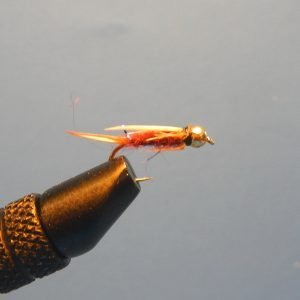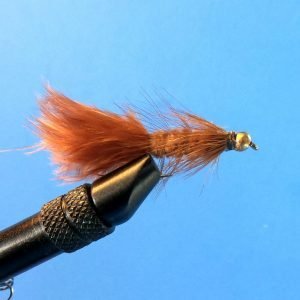Before I took up fly fishing, I knew about black flies, horse flies, tsetse flies and vaguely remembered nymphs from Greek mythology. I remember listening to my fly fishing mentor discuss flies on our first outing. Blah, blah, dry, blah, nymph, blah, blah. Without a frame of reference, I could not understand the stream of conversation, so I just sat there like a polite rock until he finally pushed a fly to me for the spot we were going to fish.
Here is that needed frame of reference which will allow you to understand, participate in the discussion and act on the decision!
Dry Fly Why You Care: Dry flies mimic floating insects. This includes terrestrials like crickets, grasshoppers, ants, and beetles as well as other stream-based species. Many end up on the top of the water as they transition from nymph to adult and after they mate and fall back to earth. Since dry flies comprise approximately 20% of a typical trout’s diet, it is essential to have some in your fly box.
Why You Care: Dry flies mimic floating insects. This includes terrestrials like crickets, grasshoppers, ants, and beetles as well as other stream-based species. Many end up on the top of the water as they transition from nymph to adult and after they mate and fall back to earth. Since dry flies comprise approximately 20% of a typical trout’s diet, it is essential to have some in your fly box.
Description: Dry flies must float, so they are constructed with a lot of stiff, fuzzy looking material called “hackle.” The hackle looks like an explosion of threads emerging perpendicular from the hook and give the fly the ability to float. Some dry flies (grasshoppers, beetles) include bits of foam as well.
Typical Use: Before casting a dry fly, apply floatant (available as a liquid, paste, spray or powder) to the hackle to increase the surface area and prevent it from absorbing water. Cast up and across the stream, mending the line to achieve a drag free drift. An exciting surface splash confirms a hit, but wait a second before setting the hook, or you will pull the fly away from the fish.
Nymph
Why You Care: Trout spend most of their life far below the surface to avoid predators. As a result, 80% of their diet consists of small insects called nymphs that live in cracks or under rocks. The 80% number should tell you to always use a nymph unless you see surface activity. Put another way, your probability of catching a trout is 80% with a nymph versus 20% with a dry fly.

Description: Most nymphs look like small, narrow pills constructed of tightly wrapped fabric and wire. Many have a small metal bead near the eye of the hook to facilitate sinking. If they have hackle or feathers, the materials are tied close to the body of the hook, mostly pointing straight back although some amount of short, flexible fuzz can be found as well.
Typical Use: Fish nymphs deep, ideally bouncing them off or just above the bottom. Attach an indicator (fly fishing version of a bobber) above the fly at a distance equaling the 1.5 times the depth. On a 2 foot deep stream, the indicator should be 3 feet from the fly. Cast up and across the stream and treat the indicator like a dry fly; managing line to achieve a drag free drift. If you see the indicator hesitate, set the hook! Granted, it could be snagging on the bottom, but it might be a fish. No hits? Increase the distance of the indicator from the fly until you start getting hung up on the bottom.
Streamer Why You Care: Trout observe the energy equation. A trout assesses the calorie content of a prospective meal versus the energy to capture it. Accordingly, larger insects, small fry or crayfish become an easy way to get a dense meal with minimal effort. Streamers imitate these types of food.
Why You Care: Trout observe the energy equation. A trout assesses the calorie content of a prospective meal versus the energy to capture it. Accordingly, larger insects, small fry or crayfish become an easy way to get a dense meal with minimal effort. Streamers imitate these types of food.
Description: Simplistically, a streamer is a large nymph with a long flexible tail. The most famous streamers are the woolly bugger and Clouser minnow. Streamers feature longer hooks, may or may not have a metal bead near the eye, and usually have a flowing, pulsing tail to mimic a swimming baitfish or moving appendage.
Typical Use: Like a nymph, fish streamers below the surface. Provide action to the streamer by pulling the fly line using a short jerking motion (stripping). Each strip can be short, pulling in a few inches, long or a combination. Whether you quickly jerk or smoothly pull depends on how you want the lure to behave.

